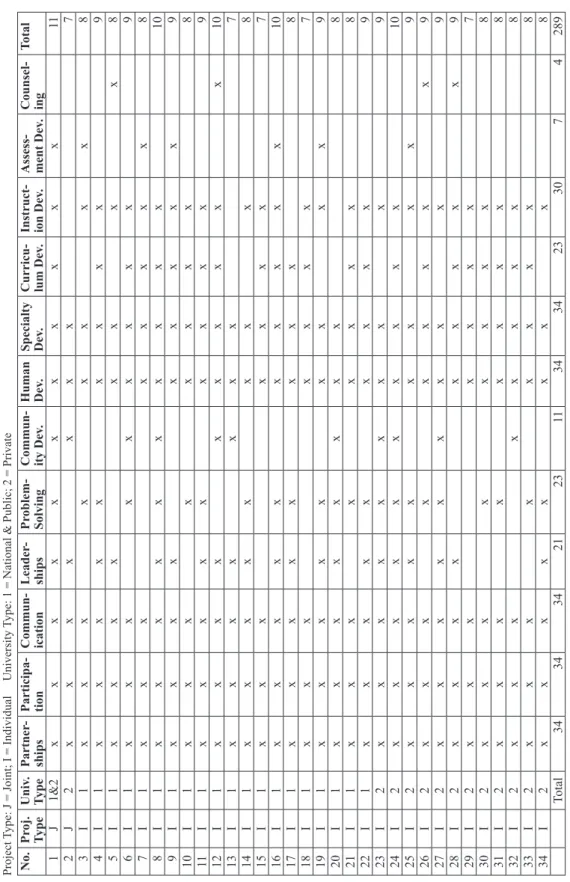研究論文 RESEARCH ARTICLES
グローバル化,情報化,知識基盤社会,教師教育,大学及び大学院教員養成プログラム globalization, information technology, knowledge-based society, teacher education, GP program for enhancing teacher training at university and graduate school
ABSTRACT
21世紀は,情報化及び技術革新に伴うグローバル化の進展によって,新しい知識の重要性が基盤と なる 「知識基盤社会」 であると言われている。グローバル化を理解し,それに伴う社会変化に適応する ためには,高度で幅広い専門知識と実践力を高めることが必須である。日本における近年の教育改革 は,1949年の教育改革以来の主要構造変化であるが,この改革は,高等教育において教授された学術 的知識と,変容する社会に求められる科学技術の知識のギャップを埋めることを目指している。本研究 では,日本の大学が高度で幅広い専門知識と実践力を高めるためにどのような役割を担っているかを検 証する。さらに,教師教育によって,グローバル社会における将来のリーダーとして,教員養成課程に ある学生の能力をどのように高めていくかを検証する。文部科学省の資金援助により
2005
−2006年度 に行われた大学及び大学院教員養成プログラムを研究対象とし,プログラムの研究内容及び方法の開発 を分析する。The 21st Century is an age of knowledge-based society due to globalization, together with information technology and innovation. There is a need to enhance students’ competence in order to produce an understanding of globalization and to effectively respond to social change. Recent university reform in Japan, the first major structural change since the postwar reform of 1949, aims at filling the gap between the abstract knowledge taught in higher education and the applied market knowledge needed in this changing
グローバル化と大学の役割
―日本の教師教育に関する一考察―
Globalization and the Role of the University:
The Case of Teacher Education in Japan
バックリー 節子 BUCKLEY, Setsuko
● ワトコム ・コミューニティー・カレッジ

